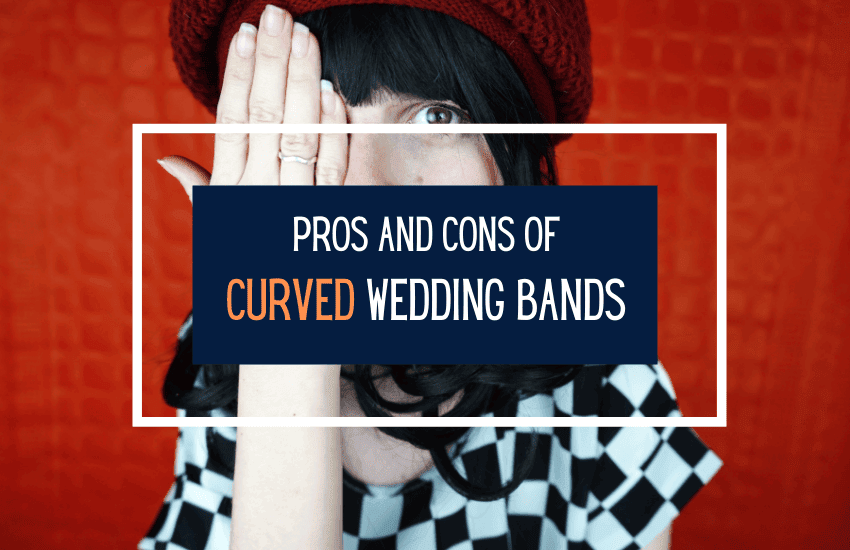
Table of Contents
While preparing for a wedding, one of the things that couples pay the most attention to is the design and style of their wedding rings. After all, wedding rings are deeply symbolic because they represent the couple’s love and commitment. They are even put in the spotlight during the ceremony as couples exchange vows while placing the ring on each other’s fingers.
Wedding rings used to be simple circular bands made of precious or semi-precious metals like silver, gold, or platinum. Over time, the designs evolved to include gemstones such as diamonds, emeralds, and sapphires. At present, wedding band designers are offering more modern styles for couples who want unique and non-traditional looks for their rings. One style that has grown in popularity over the years is the curved wedding band.
What Are Curved Wedding Bands?
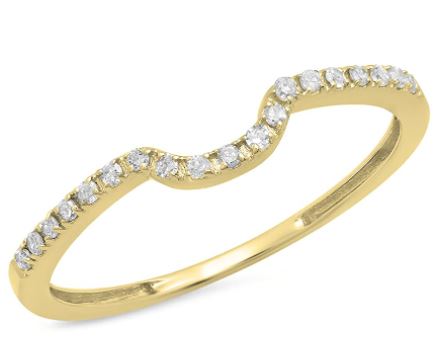
Curved wedding bands first became noticed during the Victorian era, then rose to popularity in the Art Deco period as the decade’s new and modern take on wedding bands. This style was then associated with the symbolism of two soulmates coming together as one for a lifetime.
Compared to the traditional circular rings, curved bands have a stylish curve or dip embedded in the design. Also called the notched wedding bands, chevron wedding bands, or V-cut wedding bands, these rings can be worn alone or matched up with an engagement ring that features a stone.
Nowadays, contemporary curved rings take inspiration from natural themes like wind, water, or trees. This is why you will mostly see either clean and simple lines or intricate twisted and wrapped styles in jewelry stores. Sometimes, the curve can be highly irregular, often created that way to accommodate the engagement ring.
Because of the additional molding and twisting required to make curved rings, only softer and more malleable metals like silver, gold, platinum, and palladium can be used. Harder metals like titanium, tungsten, cobalt or stainless steel are harder to liquefy and, thus, are not ideal for curved rings.
Different Designs for Curved Wedding Bands
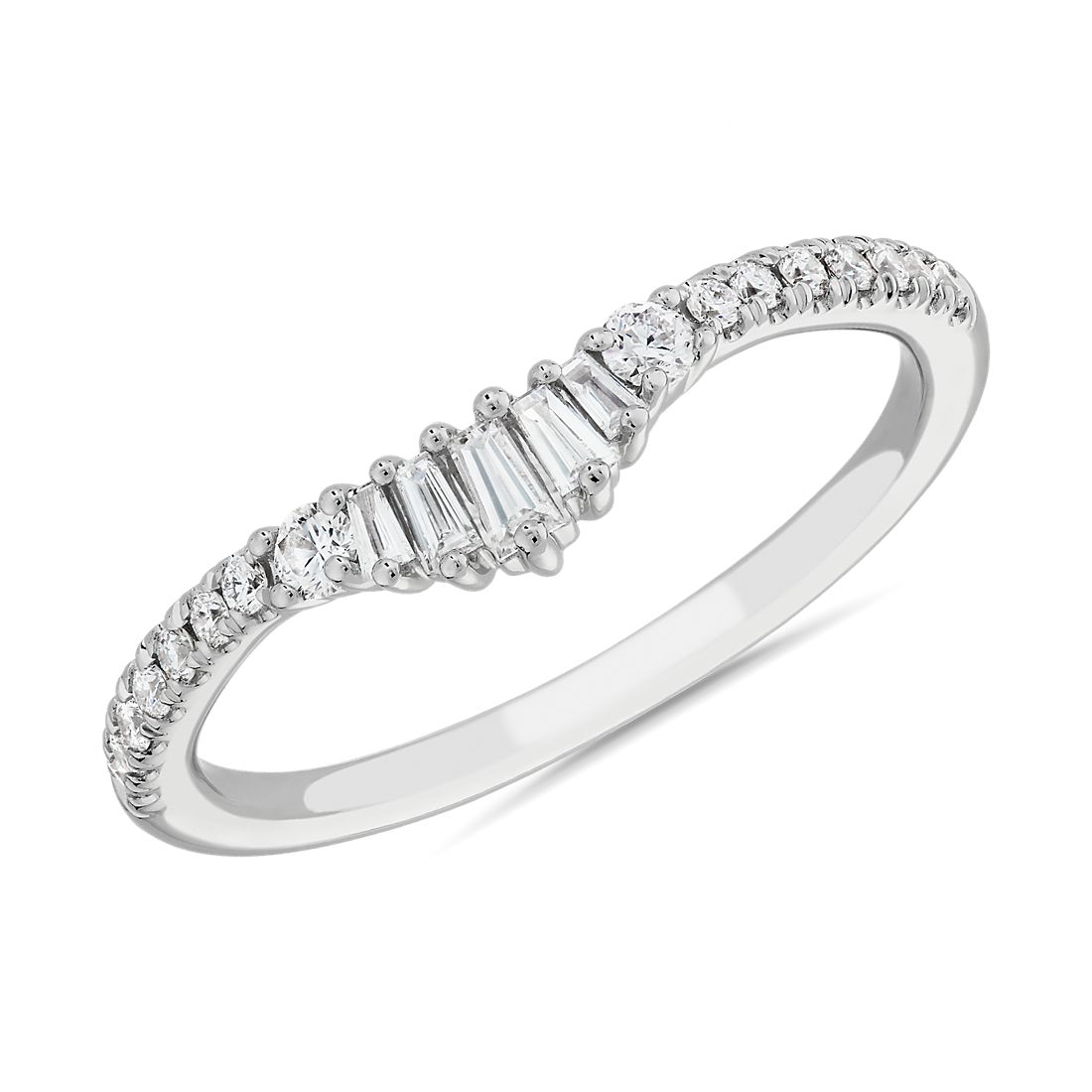
Curved wedding bands can be designed with or without stones, depending on the couple’s preference. However, designs that include stones like diamonds or other precious gems would often use smaller pieces and have them arranged in singular or double rows, depending on the width and thickness of the ring itself.
The curve can also be molded in different styles to make the ring look unique and eye-catching, as well as allow it to accommodate the engagement ring’s shape. For example, check out the wide range of Blue Nile’s curved wedding bands here. Some have unique and irregular shapes, but all pair with certain engagement ring designs.
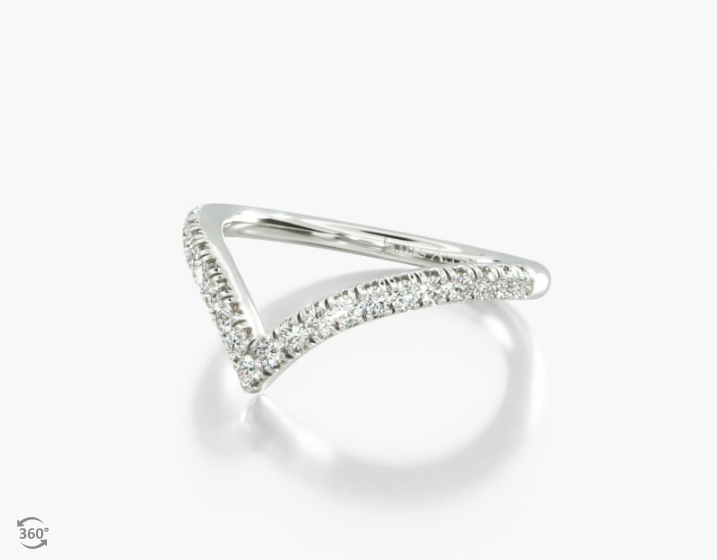
Designers play with gentle sweeping curves, a scallop type of curve, or a sharp curve that forms a V at the center. Couples can also buy their curved wedding ring as a set with the engagement ring to ensure a good fit, making it look like the rings are spooning one another.
A soft curve finish, like this stylish ring, looks very similar to straight wedding rings because the contour is barely noticeable. Most designs would have a minimal dip that would only be visible upon close inspection. On the other hand, a sharp V-cut would have a very distinct curve and are perfect for engagement rings that feature a large gemstone in the middle.
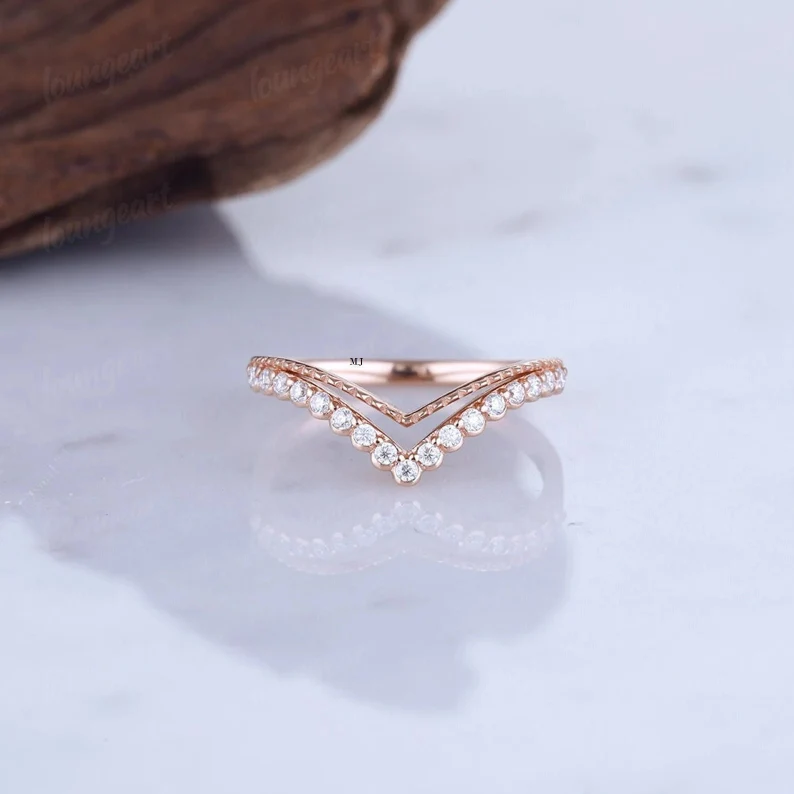
Some designs are more avant-garde, such as the irregular curve, which has an unusual and almost jagged-looking style, like this unique wavy curved ring, or the open-ended curved ring, like this one, that features two ends that don’t meet, allowing for more flexibility in terms of sizing.
Pros and Cons of Curved Wedding Bands
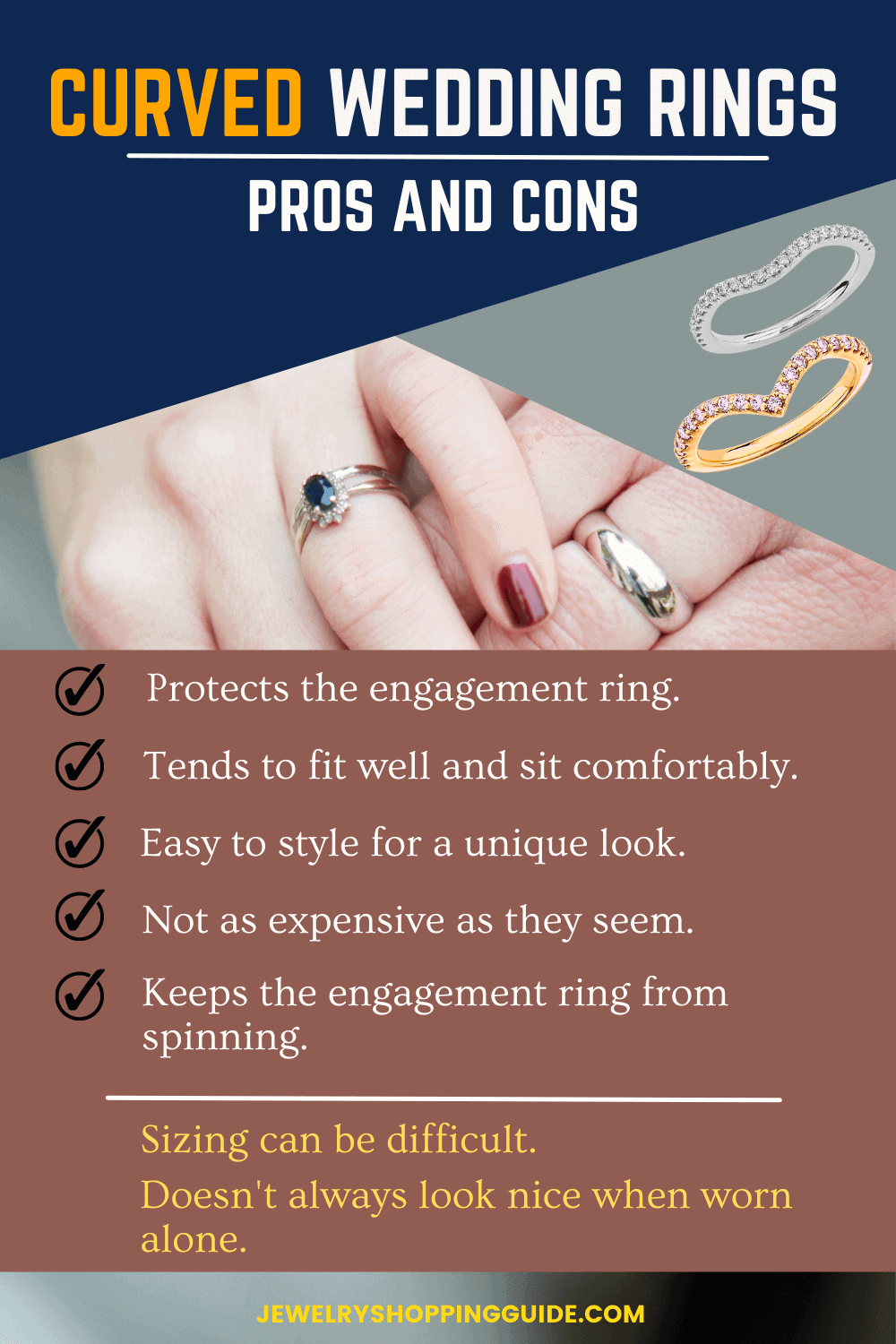
There are no hard and fast rules when choosing your wedding rings. At the end of the day, what really matters is that your rings make you feel happy and are comfortable to wear. If you are interested in getting a curved ring for your wedding band, take a look at these pros and cons before making a final decision:
Pros:
1. It Matches Well with Engagement Rings
Most engagement rings feature a rock at the center, creating a contoured effect when worn. This contour would block a straight or circular ring, leaving a small gap on your finger when both rings are worn. In contrast, a curved wedding ring would perfectly hug this contour, allowing both rings to sit comfortably on your finger and give off a more elegant and polished look.
2. It Has a Unique Appeal
Just by going with the design itself, your wedding ring will already be a step away from the traditional wedding rings that are mostly circular in shape. You also have the option of customizing it together with your engagement ring to make sure that they really fit well together. If you are the type of bride who wants something distinctive to remind you of your wedding, then this could appeal to your preferences.
3. It Gives You More Styling Options
Curved wedding rings allow designers more freedom to express their creativity. It goes the same for the brides as well. You can choose from an assortment of contemporary styles and designs for your curved ring, adding curvaceous lines that represent the modern bride.
4. It Stays Put on Your Finger
One difficulty with wearing traditional wedding rings, or any ring for that matter, is that they tend to rotate on your finger when worn. This will be fine if you wear plain bands or an eternity ring where the design is the same from all angles. However, when you’re wearing a ring with a design on top, having it upside down can be a bit off-putting. Pairing your engagement ring with your curved wedding band will help keep both in place and prevent them from turning in different directions.
Cons:
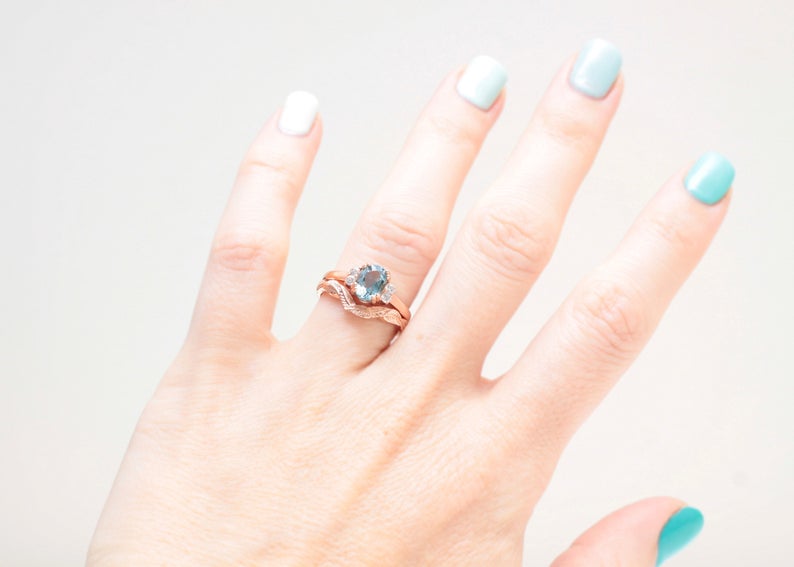
1. You Need to Always Wear Two Rings
While a curved wedding ring can still be worn by itself, it can look quite lonely on your finger, especially if you started wearing it as a pair with your engagement ring. As such, you may be compelled to wear both rings at all times for years on end, which may be challenging to continue doing over time or during certain stages in your life. For example, engagement rings with large stones could be dangerous for babies, and most new mothers would stop wearing their engagement rings during this period.
2. Repairs are More Challenging
Regular round rings are easy to repair, but curved rings are more challenging and, thus, more expensive to repair or resize. This is because the design is more intricate, so it needs an expert jeweler to make adjustments without damaging the ring.
3. It can be Uncomfortable to Wear
The twists and curves on the ring may not sit well on your finger, and you may feel uncomfortable after wearing it for the whole day, especially if you have been used to wearing plain bands before this. It may take time to get used to it, or you may not like the feeling at all, so it’s best to try similar styles at your jeweler before getting one for yourself.
Pairing Your Engagement Ring with a Curved Band
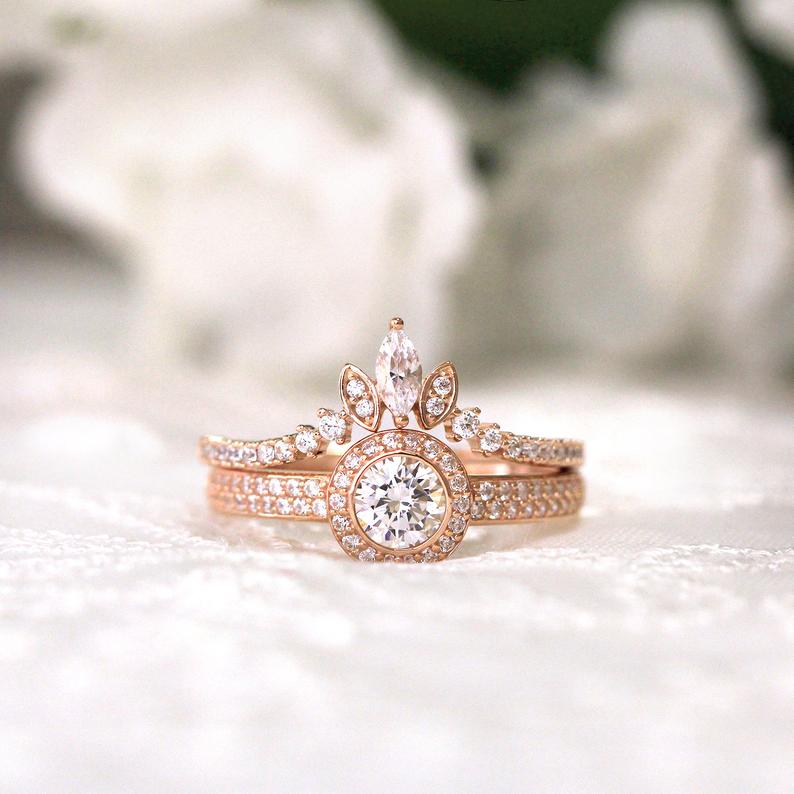
When pairing your engagement ring with a curved wedding band, there are a few points to consider for a perfect, seamless finish:
1. The Engagement Ring Setting
A curved wedding band should fit the engagement ring properly, if its to serve its purpose. A standard curved wedding band may not accommodate a large center stone, resulting in an awkward gap between your rings. If you want a smooth finish, ensure that the curved wedding band will match the center stone of your engagement ring appropriately.
2. The Ring Metals
Gold and platinum are your best options for a durable, valuable and beautiful curved wedding band. Most brides opt to have the wedding and engagement rings made of the same metal color. These rings need to match and complement each other. If you’d like to make a very bold statement, you can always go for different metal colors, but if not, then uniformity is key.
3. The Widths of the Rings
Many people believe that both the engagement and wedding rings should be of the same width, but this isn’t necessarily true. Rings with different widths tend to complement each other perfectly.
Soldering Your Rings vs. Curved Wedding Bands
One of the big pluses of curved wedding bands is that they stop the engagement ring from spinning. However, another way to achieve this is by soldering the engagement and wedding rings together. This prevents your rings from rotating in different directions and rubbing against each other.
If you prefer to wear both your rings all the time, getting them soldered is a good choice and will make sure that they both stay aligned.
On the other hand, soldering your rings together prevents you from taking one of your rings off whenever you want or matching them with different rings every day. If you’re someone who prefers not to wear both your rings together all the time, soldering won’t be a good option for you. In this case, a curved wedding band might be the better option.
Note that you can also solder a curved wedding band to its engagement ring.
FAQs About Curved Wedding Bands
1. What’s a curved wedding band?
Curved wedding bands are wedding rings that have a dip on one side, which allows the band to accommodate engagement rings with large or irregular shaped stones.
2. What are the benefits of curved wedding bands?
They allow for a better fit for your engagement ring and can also be more comfortable. They also reduce the movement of rings, which decreases maintenance over time.
3. Can you wear a curved wedding band without an engagement ring?
Yes, but the ring may not look as nice as it would when paired with an engagement ring.
4. What designs do curved rings come in?
Designs can vary with most featuring either plan metal bands or diamond pave or channel settings.
Wrapping Up
Wedding rings are important not just for use during the wedding ceremony but also as a symbolic representation of a couple’s relationship. As such, the process of choosing a wedding ring must not be taken lightly. Many factors should be taken into consideration, such as style, design, quality, durability, and wearability.
Curved wedding rings have been around since the Victorian era. Over the years, it has become a popular choice for contemporary brides with their unique shapes and designs. As with anything else, curved rings have their own advantages and disadvantages, which couples should think about before deciding to use as their wedding bands.









